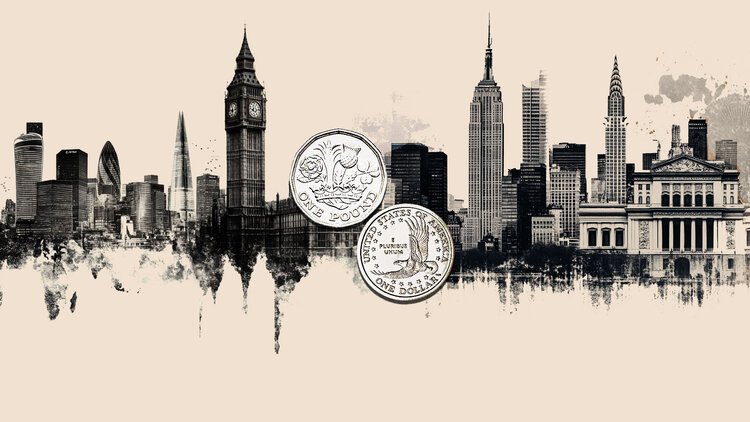Among the many curiosities faced by investors over the past year, and year to date, has been the relative strength of sterling, at a time when many commentators project a UK economy mired in gloom and the Office for Budget Responsibility halving its forecast for UK growth for 2025.
But what is the trajectory for the currency and how relevant are the fortunes of the pound likely to be for advisers and their clients in the coming years?
Victor Balfour, investment strategist at Rothschild & Co, says that on a trade-weighted basis sterling has risen by about 1 per cent since the start of the year; and while the pound has risen by about 3 per cent against the dollar, it is actually down a little against the euro.
He says: “However, much of this recent move can be attributed to all-around dollar weakness.”
Liam O’Donnell, head of macro and rates at Artemis, says the pound’s relative strength against the dollar has been a function of dollar weakness, rather than a change in the fundamental prospects for the currency.

But he adds that one element that has been positive for the currency has been the relatively higher interest rate and rate outlook for the UK. This has, he says, caused many investors to view sterling as the ideal currency from which to profit from a “carry trade”.
A carry trade means borrowing in one currency and using it to buy exposure to another currency typically via futures or government bonds.
The base rate in the UK “wasn’t cut by as much as expected”, over the past year, and in the UK is above 4 per cent, whereas in the Eurozone is below 3 per cent, meaning investors can potentially pick up a profit of perhaps 100 basis points for taking very little risk, or doing very little work.
He says a combination of this investment opportunity and the fact that “sterling screens as a cheap currency based on fundamental analysis”, meant that “investors were generally quite optimistic about the outlook for sterling coming into 2025.”
His view is that based on purchasing price parity, a commonly used measure of the strength of a currency, the UK is cheap when compared with peers.
The notion of investors buying a currency because it is cheap is not new, but O’Donnell says it may not be enough to ensure sterling continues to outperform.
His view is that recent economic events have “weakened the positive sentiment” towards the currency.
O’Donnell’s view is that the trend rate of growth in the UK economy was above 2 per cent prior to the global financial crisis, and is now about one per cent, and if that is happening, it should be reflected in a weaker currency over the longer-term.


















